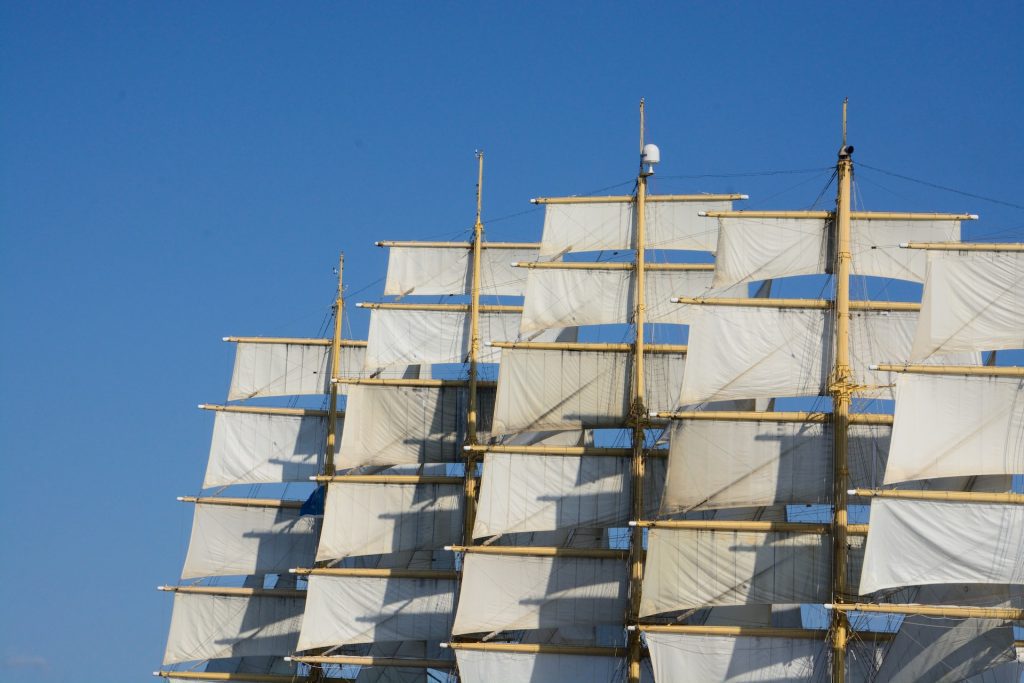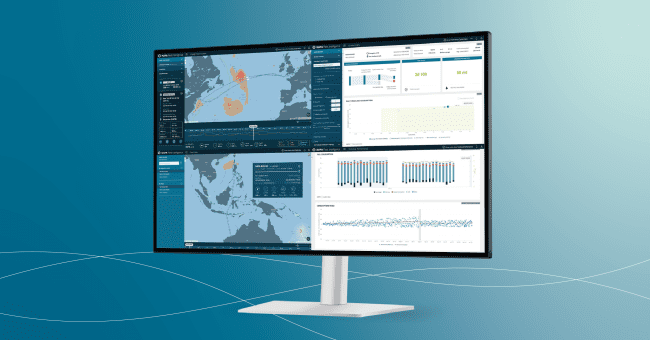Data-powered digital solutions boost the benefits of wind propulsion
The idea of reviving the ‘age of sail’ in the world of modern commercial shipping has sparked interest in the broader media and captured the imagination of many outside the industry. For insiders, it’s a romantic idea that needs to stand up to the harsh realities of a modern, narrow-margin, highly-regulated and competitive industry.
Solutions for Wind-Assisted ShipsWith so much potential on the line, we are proud to say that NAPA’s expertise in vessel modeling and optimization, as well as weather routing and performance analysis, has proven valuable in the development of wind-assisted ship technology solutions that excel in this tough environment.
For example, we partnered with C-Job Naval Architects to conduct vital research exploring the applications of wind-assisted propulsion and the consequent carbon reduction benefits. Through our joint research, we confirmed the potential of rotor sails, which can save up to 20% of fuel on deep-sea routes and around 5% in the North and Baltic Seas. This research was instrumental in empowering rotor sails to move from concept to reality.
Partnership
As wind-assisted technologies mature, with an increasing number of installations (there are currently 19 large vessels with wind propulsion installed, according to IWSA) we are continuing to help the industry make the most of it. Together with rotor sail pioneer Norsepower, we have been able to demonstrate that data-powered digital solutions can help enhance the benefits of wind propulsion, minimize fuel consumption, reduce costs, increase efficiency and, overall, improve compliance with CII regulations.
Under a recent agreement, our NAPA Voyage Optimization software will be included as an option in all future sales of Norsepower’s Rotor Sails solution. Why? The combination of voyage optimization and wind propulsion provides significant potential for enhanced performance compared to either of the two technologies alone.
NAPA’s software determines the best possible voyage plan for a vessel to maximize energy savings, taking into account weather conditions throughout the voyage as well as each ship’s design profile and operational requirements. Importantly, the suggested routes are tailored to the designs and characteristics of each ship, using vessel-specific digital models to assess and predict performance under different conditions. This means that Norsepower’s Rotor Sails are specifically considered in the ship performance models that deliver optimal routing.
The results, demonstrated by NAPA research, can improve fuel efficiency by a third compared to just installing the Rotor Sails without NAPA Voyage Optimization. After all, traditional voyage optimization logic involves avoiding wind, but for wind-assisted vessels, the same software can be used to take advantage of it. We take into consideration an array of environmental factors including wave height, direction, and frequency to calculate the total resistance of the vessel as part of our intelligent routing techniques that ensures vessels can safely take advantage of wind and weather on their voyages.
Potential
The potential value of combining multiple technologies has not yet been realized in many cases, because shipping companies may be familiar with a small number of potential combinations but not fully versed in the increasing array of energy-saving technologies that can be successfully combined on a vessel.
This is not surprising. As projects such as WiSP 2 led by MARIN demonstrate, the industry still has a lot to learn about making the business case for these solutions, individually or in combination. Indeed, a study by CE Delft found that a major barrier to the uptake of wind-assist technology is the shortage of transparent and independently verified information and methods to predict the performance of wind propulsors.
We believe that with more data comes more clarity, and we offer the tools to achieve that, so that shipowners can make better decisions. The crews and operators of the ship who are making the day-to-day decisions also need the right data to ensure that theoretical optimization goals are fully realized in practice.
Recently, NAPA and Norsepower participated in a panel discussion challenging conventional thinking around clean technology adoption. Panelists highlighted the variety of drivers challenging the industry to decarbonize: current fuel prices, the anticipated cost of carbon as a tax or levy, increasing fuel costs as new, low carbon fuels emerge, pending EEXI and CII regulations, and ESG drivers from shippers, banks and other stakeholders.
The ability to make decisions, based on trusted data, will be essential for operators looking to succeed in navigating the decarbonization transition. Regardless of what technology or fuel is used on board a ship, data will be essential to achieving the best results from new technologies. Each vessel is unique, and this will be even more obvious in the future, as alternative fuels and a broad range of clean technologies are deployed, further increasing the diversity of the fleet. Accurate data gives more visibility into the different possible solutions and their impact on fuel consumption.
Collaboration
Coinciding with rising interest in wind-assisted shipping is a rise in expectations that the industry will move from a target of 50% emissions reductions in 2050 to a net-zero one. This further raises the importance of data to guide decision-making on solutions. The payback time of a single solution may not be the best metric – rather, the potential multiplier effect of combining it with other solutions will provide a clearer picture of how it will help meet regulatory compliance and ESG targets. After all, once payback has been achieved, vessel owners have many more years of a ship’s lifetime to reap the benefit of a well-optimized, highly marketable asset.
Improving the sustainability of shipping requires a partnership that ranges from shipyards to class societies, to shipowners, operators, charterers, cargo owners and more; and NAPA provides the tools for all stakeholders to innovate and collaborate, now and in the future. We help shipowners make the big decisions for their vessels throughout their lifecycle, from major design choices, to how they are operated to ensure safety and sustainability, to retrofit decisions. From the point at which the vessel is an idea, to a reality, NAPA’s 3D models, stability expertise and big data capabilities support its owner, its crew, and the vessel itself.
We expect our role as collaborators, validating and optimizing new, green technologies, such as wind-assisted propulsion, to remain an integral part of enabling the low-carbon fleet of the future. Given the magnitude of the energy transition challenge, combining commercially proven solutions enables shipowners to take the next step towards not only meeting regulatory targets, but exceeding them. Vessels using the solutions available today will be able to decarbonize faster – taking our net-zero future from a shared vision to reality.



